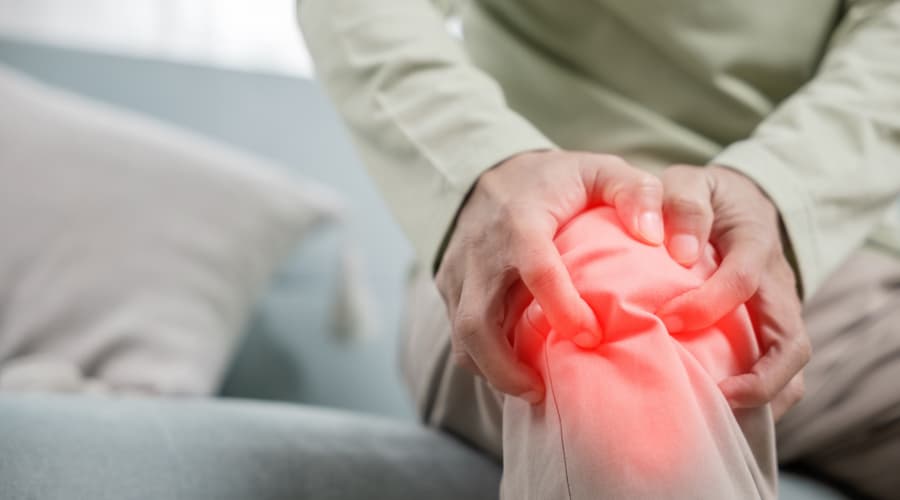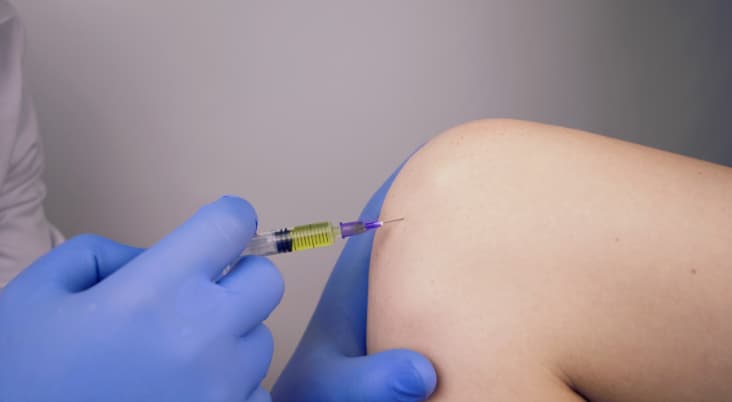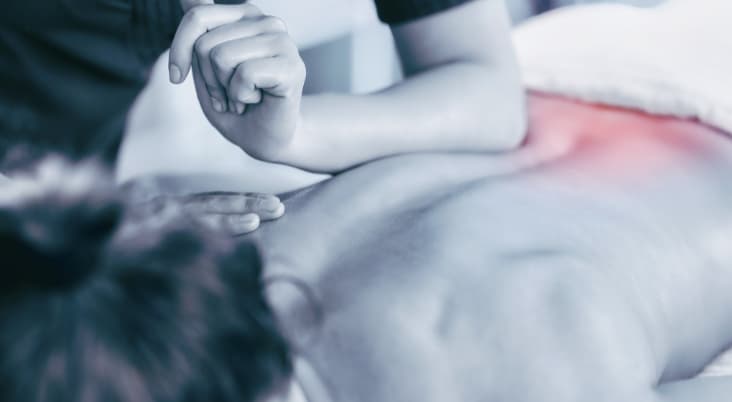Erectile Dysfunction (ED) is a prevalent medical condition that affects numerous men across the United Kingdom. Characterised by the inability to achieve or sustain an erection sufficient for sexual activity, ED presents physiological challenges and significantly impacts an affected individual’s emotional and psychological well-being. In recent years, the UK has witnessed a steady surge in reported ED cases, mirroring global trends and amplifying the need for innovative therapeutic interventions.
Amidst the traditional treatments available, a novel approach has garnered increasing attention within the medical community: the P-Shot. This procedure, leveraging the regenerative capabilities of Platelets, offers a promising avenue for addressing the root causes of ED rather than merely alleviating symptoms.
Background on Erectile Dysfunction
Erectile Dysfunction (ED), at its core, is a clinical condition defined by the recurrent inability of a man to achieve or maintain an erection firm enough for sexual intercourse. This dysfunction can manifest as a total inability to achieve an erection, an inconsistent ability, or a propensity only to sustain brief erections. While occasional erectile difficulties are common and can occur for various reasons, persistent symptoms signify a deeper underlying issue that warrants medical attention.
Clinically, ED is often classified based on its causes, with the primary categories being:
Psychogenic:
It stems from psychological or emotional factors, including stress, anxiety, depression, and relationship issues.
Neurogenic:
It is associated with neurological disorders like Parkinson’s, multiple sclerosis, or spinal cord injuries.
Vasculogenic:
About blood flow issues, commonly due to cardiovascular diseases or diabetes.
Hormonal:
It originates from an imbalance in hormones, particularly testosterone.
Anatomical:
Concerning structural abnormalities of the penis.
Traditionally, the primary treatment modalities for ED include:
Pharmacological Treatments:
PDE5 inhibitors are the most widely prescribed. These work by enhancing nitric oxide, a natural chemical the body produces to relax penis muscles and increase blood flow.
Lifestyle Changes:
Regular exercise, a balanced diet, moderated alcohol consumption, smoking cessation, and stress management can all significantly impact ED’s severity and frequency. For some men, making these changes can resolve symptoms without the need for further treatments.
Penile Implants:
Surgically placed devices that can be inflated or kept rigid to provide an erection. They are often a last-resort treatment after other methods have failed.
Vacuum Erection Devices:
Mechanical pumps that induce an erection by drawing blood into the penis.
Psychotherapy:
Counselling or therapy can benefit ED primarily or partially linked to psychological factors.
However, while the treatments above have proven efficacy, they aren’t universally effective or free from side effects. Some men experience suboptimal results, undesirable side effects, or contraindications that render specific treatments unsuitable. Consequently, there’s a growing need for alternative or supplementary treatments that can address ED from novel angles, providing hope for those seeking a more holistic or practical approach to management. This burgeoning demand has set the stage for innovations like the P-Shot, promising a new era in ED therapy.
Understanding the P-Shot
The P-Shot’s origins trace back to the broader use of platelets in regenerative medicine. Over the past decades, platelets have been effectively utilised to heal wounds, enhance tissue regeneration, and even in aesthetic procedures to rejuvenate the skin. Capitalising on these regenerative capacities, medical professionals began investigating the potential applications of platelets in addressing erectile dysfunction, leading to the development of the P-Shot.
Platelets and Their Biological Properties
Platelets, essential cellular components in our blood, are primarily known for their role in coagulation or clotting. However, they also contain numerous proteins, growth factors, and cytokines, pivotal in initiating and augmenting tissue repair and regeneration. When concentrated and reintroduced into specific tissues, platelets can stimulate cellular growth angiogenesis (formation of new blood vessels) and enhance natural healing, thereby rejuvenating the target tissue.
The P-Shot Mechanism in ED Treatment
When considering erectile function, a healthy blood flow and robust tissue integrity in the penile region are crucial. Over time, factors like ageing, vascular diseases, or injuries can compromise the erectile tissue’s health and integrity.
The P-Shot involves extracting a patient’s blood, processing it to concentrate the platelets, and then precisely injecting this concentration into specific areas of the penis. The platelets release growth factors that trigger the body’s natural regenerative process upon administration. In essence, the aim is twofold:
1. Enhancing Blood Flow:
The P-Shot promotes angiogenesis to improve blood flow in the penile tissue. A healthier, more robust vasculature can substantially influence the quality of erections.
2. Tissue Regeneration:
The platelet growth factors stimulate cellular proliferation and tissue repair, rejuvenating the penile tissue and potentially restoring its structural and functional integrity.
Regenerative Potential of the P-Shot
At the forefront of modern medical interventions for ED, the P-Shot taps into the intricate dynamics of cellular regeneration, offering a unique approach that differs markedly from conventional therapies. By harnessing the body’s natural repair mechanisms, the P-Shot aims to address the root causes of ED rather than merely its symptoms.
Platelets play a crucial role in the body’s healing processes. They are reservoirs of growth factors, which are proteins that signal cells to perform various tasks, including differentiation, migration, and proliferation. When introduced into areas of injury or degeneration, these growth factors orchestrate a symphony of repair.
Cytokines and Growth Factors:
Cytokines and growth factors released by the platelets work by:
Tissue Repair:
Growth factors like Platelet-Derived Growth Factor (PDGF) and Transforming Growth Factor (TGF) are pivotal in recruiting cells to the injury site and stimulating their proliferation. They help repair damaged structures and replace dead or malfunctioning cells.
Angiogenesis:
Vascular Endothelial Growth Factor (VEGF) is instrumental in promoting the formation of new blood vessels. Enhanced vascularisation in the penile tissue can lead to more substantial and more sustained erections.
Collagen Formation:
Collagen, a primary structural protein in tissues, maintains tissue integrity. Growth factors support the synthesis of collagen, ensuring tissue firmness and elasticity.
Several regenerative therapies are under exploration for ED treatment. When comparing the P-Shot to these alternatives, several distinctions emerge:
Stem Cell Therapy:
Stem cells can differentiate into various cell types, potentially repairing or replacing damaged tissues. However, their use involves more complexities, such as sourcing (autologous vs. allogeneic) and the risk of tumour formation. While promising, stem cell therapies for ED are still in the nascent stages of research, with fewer documented successes than the P-Shot.
Low-Intensity Extracorporeal Shockwave Therapy (LI-ESWT):
This involves directing acoustic waves at the penile tissue to encourage blood vessel formation and tissue growth. It’s non-invasive and has shown promise in some studies. However, the P-Shot offers the added advantage of directly introducing growth factors into the tissue, potentially enhancing the regenerative response.
Ozone Therapy:
Some practitioners have explored ozone therapy’s potential to improve circulation and tissue oxygenation. However, its efficacy in treating ED is still under debate, with more consistent results seen with the P-Shot.
Efficacy and Clinical Evidence
As with any medical intervention, the effectiveness of the P-Shot relies upon rigorous clinical evaluation.
A multicentre study across several countries evaluated the efficacy of the P-Shot in men with varying degrees of ED. The results indicated a significant improvement in the International Index of Erectile Function (IIEF) scores among participants, especially those with mild to moderate ED.
A prominent UK-based trial encompassing several renowned medical institutions assessed the P-Shot’s efficacy against a placebo. The double-anonymized, randomised study found that those receiving the treatment experienced significant improvements in erectile function compared to the placebo group, reaffirming the procedure’s therapeutic potential.
Success Rates:
Across most studies, around 60-70% of participants reported marked improvements in their ED symptoms after undergoing the P-Shot procedure. It’s worth noting that the treatment’s effectiveness was particularly pronounced in individuals with vasculogenic ED.
Patient Satisfaction: Surveys post-treatment indicated high patient satisfaction. Nearly 75% of the respondents reported being “satisfied” or “highly satisfied” with the outcomes, with many emphasising enhanced self-confidence and improved relationship dynamics as additional benefits.
Duration of Effect:
The reported duration of the P-Shot’s benefits varies, with many patients experiencing improvements for 12-18 months post-procedure. However, individual results can differ based on the severity of ED, underlying health conditions, and other factors.
Safety Profile: Using the patient’s platelets significantly reduces the risk of allergic reactions or rejections. Long-term data suggests that the P-Shot has a favourable safety profile with minimal adverse effects.
Retreatment:
Some patients opt for periodic retreatments to maintain or boost the beneficial effects. The safety of repeat procedures appears consistent, though individualised consultation with healthcare professionals is recommended.
In summary, P-Shot represents a significant development in treating Erectile Dysfunction (ED). By utilising the body’s regenerative capabilities, it introduces a new approach that contrasts with traditional methods.
Vale Health Clinic in Tunbridge Wells provides a bespoke treatment program for Erectile Dysfunction and Peyronie’s disease.
Related Articles
- A Closer Look at the P-Shot in Promoting Men’s Sexual Health
- Frequently Asked Questions about P-Shot and Erectile Dysfunction
- 5 Benefits of P-shot for Erectile Dysfunction
- The Science Behind P-Shot: How Does it Work?
- P-Shot Treatment for Erectile Dysfunction




























